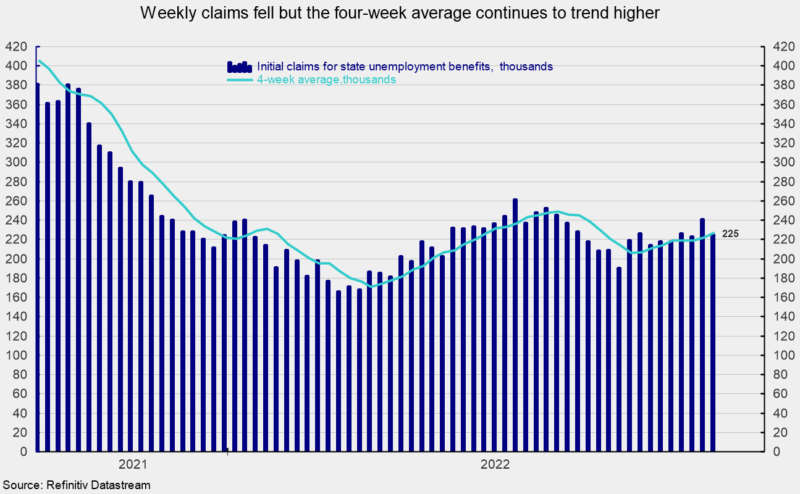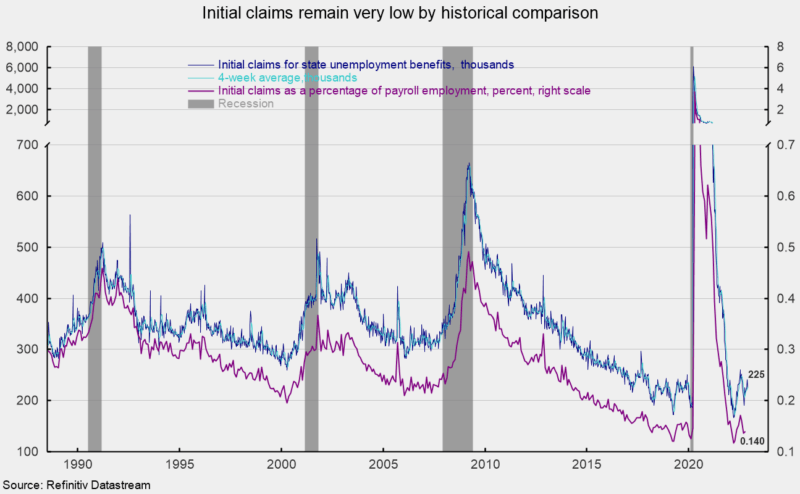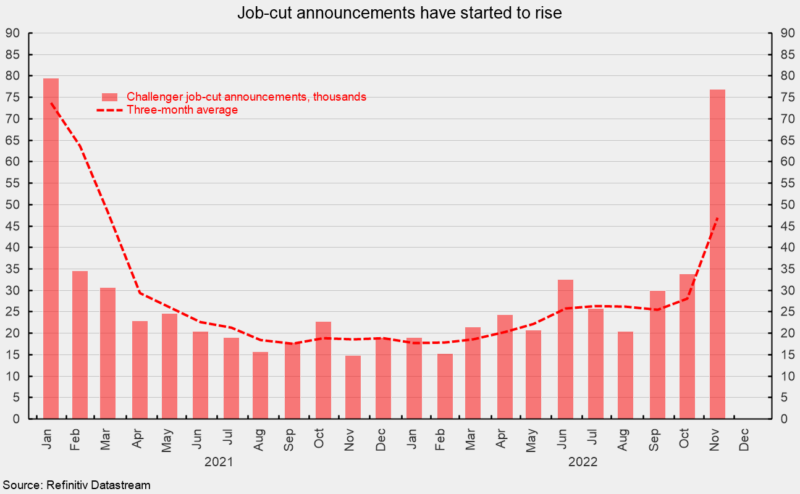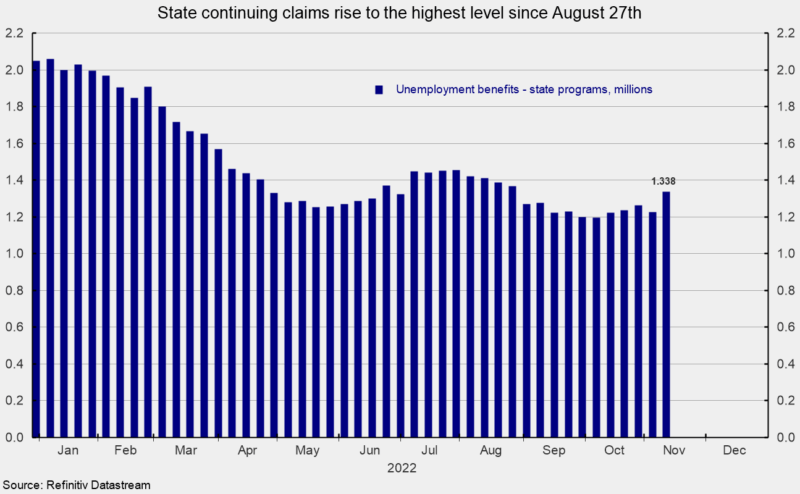Initial claims for regular state unemployment insurance fell by 16,000 for the week ending November 26th, coming in at 225,000. The previous week’s 241,000 was revised up from the initial estimate of 240,000 (see first chart). The four-week average of weekly initial claims rose to 228,750, up 1,750 for the week. That was the fifth increase in the last seven weeks and the highest level since September 3rd (see first chart).
When measured as a percentage of nonfarm payrolls, claims came in at 0.140 percent for October, up from 0.136 in September and above the record low of 0.117 in March (see second chart). While the level of weekly initial claims for unemployment insurance remains very low by historical comparison, the rising trend is a concern.
Job-cut announcements have started to increase recently adding to the concern over the rising trend in initial claims (see third chart). While the data continue to imply a tight labor market, continued elevated rates of price increases, an aggressive Fed tightening cycle, and fallout from the Russian invasion of Ukraine remain risks to the economic outlook.
The number of ongoing claims for state unemployment programs totaled 1.338 million for the week ending November 12th, an increase of 111,080 from the prior week (see fourth chart). State continuing claims are at the highest level since August 27th but remain within the 1.2 million and 1.5 million range (see fourth chart).
The latest results for the combined Federal and state programs put the total number of people claiming benefits in all unemployment programs at 1.368 million for the week ended November 12th, an increase of 115,477 from the prior week.
While the overall low level of initial claims suggests the labor market remains tight, the upward trend in claims and rising job-cut announcements are concerns. The tight labor market is a crucial component of the economy, providing support for consumer spending. However, persistently elevated rates of price increases already weigh on consumer attitudes, and if consumers lose confidence in the labor market, they may significantly reduce spending. The outlook remains highly uncertain.
* This article was originally published here
PUBLISH WITH US!
The Washington Gazette works at our discretion with businesses, non-profits, and other organizations. We do not work with socialists, crony capitalists, or disinformation groups. Click the green button below to view our services!
HELP STOP THE SPREAD OF FAKE NEWS!
SHARE our articles and like our Facebook page and follow us on Twitter!








0 Comments